




Your support is critical to our success.
J. Mammillaria Soc. 31: 26. 1991
Family: CACTACEAE
Accepted Scientific Name: Mammillaria grahamii Engelm.
Syn. Cact. U. S. 6. 1856 Proc. Amer. Acad. Arts 3: 262. 1857 Engelm.

Origin and Habitat: California, Arizona, New Mexico and Texas, USA; Sonora, Sinaloa and Chihuahua, Mexico.
Altitude: 200-1800 metres above sea level.
Habitat: These small cacti is found in desert mountains, sandy or rocky canyons, washes and plains on igneous or limestone substrate. They grow in sparse woodland, among desert creosote shrub (Larrea tridentata) or in grassland, and it is very easy to overlook them, except when they are blooming. They bloom about five days after the first summer rains of the monsoon.
Ecology: This plants uses nurse plants to protect against frosts, harsh sun, trampling, etc. so one must look carefully under shrubs and trees to find them. In the same area it is possible to find several cactus and succulent species like: Echinocactus parryiSN|938]]SN|938]], Echinocereus fendleriSN|8503]]SN|7149]], Echinocereus pectinatusSN|7149]]SN|8503]], Coryphantha recurvataSN|10231]]SN|10231]], Lophocereus schottiiSN|8344]]SN|8344]], Pachycereus pecten-aboriginumSN|8498]]SN|8498]], Stenocereus thuberi, Opuntia fulgida, Opuntia leptocaulisSN|25092]]SN|10936]], Opuntia engelmanniiSN|19920]]SN|19920]], Opuntia violaceaSN|10936]]SN|25092]], Opuntia bigelowii, Ferocactus wislizeniSN|21495]]SN|16130]]i, Carnegiea giganteaSN|6374]]SN|6374]], Ferocactus acanthodesSN|10113]]SN|10113]], Ferocactus emoryiSN|16130]]SN|21495]], Ephedra trifurca, Agave palmeriSN|22538]]SN|22538]], Yucca elata, and Fouquieria macdougaliiSN|11333]]SN|11333]].
Synonyms:
- Mammillaria grahamii Engelm.
- Cactus grahamii (Engelm.) Kuntze
- Chilita grahamii (Engelm.) Orcutt
- Cochemiea grahamii (Engelm.) Doweld
- Coryphantha grahamii (Engelm.) Rydb.
- Mammillaria microcarpa subs. grahamii (Engelm.) Mottram
- Mammillaria milleri var. grahamii (Engelm.) Neutel.
Mammillaria grahamii Engelm.
Syn. Cact. U. S. 6. 1856 Proc. Amer. Acad. Arts 3: 262. 1857
Synonymy: 26
- Mammillaria grahamii Engelm.
- Cactus grahamii (Engelm.) Kuntze
- Chilita grahamii (Engelm.) Orcutt
- Cochemiea grahamii (Engelm.) Doweld
- Coryphantha grahamii (Engelm.) Rydb.
- Mammillaria microcarpa subs. grahamii (Engelm.) Mottram
- Mammillaria milleri var. grahamii (Engelm.) Neutel.
- Mammillaria microcarpa Engelm. in Emory
- Chilita microcarpa (Engelm. in Emory) Buxb.
- Ebnerella microcarpa (Engelm. in Emory) Buxb.
- Neomammillaria microcarpa (Engelm. in Emory) Britton & Rose
- Mammillaria microcarpa var. auricarpa W.T.Marshall
- Mammillaria microcarpa f. auricarpa (W.T.Marshall) Neutel.
- Mammillaria milleri f. auricarpa (W.T.Marshall) Neutel.
- Mammillaria microcarpa f. cristata hort.
- Mammillaria milleri (Britton & Rose) Boed.
- Chilita milleri (Britton & Rose) Orcutt
- Mammillaria microcarpa var. milleri (Britton & Rose) W.T.Marshall
- Neomammillaria milleri Britton & Rose
- Mammillaria oliviae Orcutt
- Chilita oliviae (Orcutt) Orcutt
- Ebnerella oliviae (Orcutt) Buxb.
- Mammillaria grahamii var. oliviae (Orcutt) L.D.Benson
- Mammillaria microcarpa f. oliviae (Orcutt) Neutel.
- Mammillaria milleri f. oliviae (Orcutt) Neutel.
- Neomammillaria oliviae (Orcutt) Britton & Rose
Mammillaria grahamii subs. sheldonii (Britton & Rose) D.R.Hunt
Cactaceae Syst. Init. 20: 21. 2005 [Nov 2005]
Synonymy: 33
- Mammillaria grahamii subs. sheldonii (Britton & Rose) D.R.Hunt
- Chilita sheldonii (Britton & Rose) Orcutt
- Cochemiea sheldonii (Britton & Rose) Doweld
- Ebnerella sheldonii (Britton & Rose) Buxb.
- Mammillaria microcarpa var. sheldonii (Britton & Rose) Neutel.
- Mammillaria milleri var. sheldonii (Britton & Rose) Neutel.
- Mammillaria sheldonii (Britton & Rose) Boed.
- Neomammillaria sheldonii Britton & Rose
- Mammillaria alamensis R.T.Craig
- Chilita alamensis (R.T.Craig) Buxb.
- Escobariopsis sinistrohamata (Boed.) Doweld
- Neomammillaria alamensis (R.T.Craig) Y.Itô
- Mammillaria gueldemanniana Backeb.
- Chilita gueldemanniana (Backeb.) Buxb.
- Mammillaria microcarpa f. gueldemanniana (Backeb.) Neutel.
- Mammillaria milleri f. gueldemanniana (Backeb.) Neutel.
- Mammillaria gueldemanniana var. guirocobensis (R.T.Craig) Backeb.
- Ebnerella guirocobensis (R.T.Craig) Buxb.
- Mammillaria guirocobensis R.T.Craig
- Mammillaria inaiae R.T.Craig
- Chilita inaiae (R.T.Craig) Buxb.
- Ebnerella inaiae (R.T.Craig) Buxb.
- Neomammillaria inaiae (R.T.Craig) Y.Itô
- Mammillaria marnieriana Backeb.
- Mammillaria pseudoalamensis Backeb.
- Mammillaria swinglei (Britton & Rose) Boed.
- Chilita swinglei (Britton & Rose) Orcutt
- Chilita swingleri (Britton & Rose) Orcutt
- Cochemiea swinglei (Britton & Rose) Doweld
- Ebnerella swinglei (Britton & Rose) Buxb.
- Mammillaria microcarpa f. swinglei (Britton & Rose) Neutel.
- Mammillaria milleri f. swingeli (Britton & Rose) Neutel.
- Neomammillaria swinglei Britton & Rose
ENGLISH: Fishhook Cactus, Sunset Cactus, Olive's Pincushion, Miller's pincushion, Lizard Catcher, Graham's Fish-hook cactus, Fish-hook Pincushion, Black-spined Pincushion, Arizona Fishhook Cactus, Pincushion Cactus, Graham's Nipple Cactus
SPANISH (Español): Choyita, Pitahayita, Cabeza de viejo
UKRAINIAN (Українська): Мамілярія греxемі, Мамілярія Греxема
Description: Plants are solitary or budding either basally or near the middle, often cespitose, but in small clusters (but sometime they can form clusters of many individuals). This species is quite common in habitat, but variable throughout the region.
Roots: Thickened.
Stems: Globose to short cylindrical, light green, 7 - 15 cm or more in height, 7.5 - 11 cm in diameter without latex.
Tubercles: Ovoid to cylindrical, often four-angled, corky when old . The axil is naked.
Radial spines: 20 - 35, straight, glabrous, needle-like, interlacing, so dense that it is difficult to see the stem body underneath, white to greyish to light brown to reddish, 6 - 12 mm long, lateral ones longest.
Central spines: 1 - 4, yellowish brown to (often) dark brown, 12 - 25 mm long, the longest one usually hooked.
Flowers: The flower is large for the genus, broadly funnel-form, pink to lavender pink to reddish purple, sometimes white with a deeper central stripe, 20 - 45 mm in diameter. Tepals, obovate, acuminate, stile longer than stamens, purplish, stigma lobes 7-8, linear, green.
They grow just below the top of the cactus and sometimes form perfect, crown-like rings. The number of flowers produced by an individual plant depends largely on plant volume.
Blooming season: Flowers in the early summer and a plant can produce two or three batches of flowers. Individual flowers normally live one day, but can open a second day when pollination is inadequate.
Fruits: Clavate, slightly fleshy, bright red, 12 - 25 mm long.
Seeds: Black, shining, pitted, globose 0,8-1 mm in diameter.
Subspecies, varieties, forms and cultivars of plants belonging to the Mammillaria grahamii/sheldonii group
 Mammillaria alamensis R.T.Craig: (Mammillaria grahamii subs. sheldonii) without or with only 1 central spine, about 9 radial spines, white, tipped brown, needle-like, about 6 to 8 mm long. Distribution: Sierra de Alamos, Alamos, Sonora, Mexico.
Mammillaria alamensis R.T.Craig: (Mammillaria grahamii subs. sheldonii) without or with only 1 central spine, about 9 radial spines, white, tipped brown, needle-like, about 6 to 8 mm long. Distribution: Sierra de Alamos, Alamos, Sonora, Mexico. Mammillaria grahamii Engelm.: has 20-35 white to greyish to light brown to reddish radial spines. 1-4 central spines yellowish to dark brown central, one usually hooked. It is very variable. Distribution: California, Arizona, New Mexico and Texas, USA; Sonora, Sinaloa and Chihuahua, Mexico.
Mammillaria grahamii Engelm.: has 20-35 white to greyish to light brown to reddish radial spines. 1-4 central spines yellowish to dark brown central, one usually hooked. It is very variable. Distribution: California, Arizona, New Mexico and Texas, USA; Sonora, Sinaloa and Chihuahua, Mexico. Mammillaria grahamii subs. sheldonii (Britton & Rose) D.R.Hunt: has 9-24 radial spines. Central spines either straight or hooked, 1-1,5 cm long. Flowers purplish-pink with a pinkish brown midstripe. It is variable. Distribution: Mexico (Sonora and Chihuahua).
Mammillaria grahamii subs. sheldonii (Britton & Rose) D.R.Hunt: has 9-24 radial spines. Central spines either straight or hooked, 1-1,5 cm long. Flowers purplish-pink with a pinkish brown midstripe. It is variable. Distribution: Mexico (Sonora and Chihuahua). Mammillaria gueldemanniana Backeb.: aside from bigger flowers, not many differences. Distribution: Mexico, Chihuahua, Sonora and Sinaloa.
Mammillaria gueldemanniana Backeb.: aside from bigger flowers, not many differences. Distribution: Mexico, Chihuahua, Sonora and Sinaloa. - Mammillaria gueldemanniana var. guirocobensis (R.T.Craig) Backeb.: (Mammillaria grahamii subs. sheldonii) has 1-3 reddish-brown central spines almost 1 cm long. One spine is hooked. Flowers bigger and widely open. Distribution: Sonora, Sinaloa, Chihuahua at higher altitudes.
- Mammillaria inaiae R.T.Craig: (Mammillaria grahamii subs. sheldonii)
- Mammillaria marnieriana Backeb.: (Mammillaria grahamii subs. sheldonii)
 Mammillaria microcarpa Engelm. in Emory: (Mammillaria grahamii) has 15-35 pale radial spines and 1-3, yellowish-brown to purplish black centrals, the longest hooked. Fruits scarlet. Distribution: USA (Texas, New Mexico, Utah, California and Arizona) and Mexico.
Mammillaria microcarpa Engelm. in Emory: (Mammillaria grahamii) has 15-35 pale radial spines and 1-3, yellowish-brown to purplish black centrals, the longest hooked. Fruits scarlet. Distribution: USA (Texas, New Mexico, Utah, California and Arizona) and Mexico. Mammillaria microcarpa var. auricarpa W.T.Marshall: (Mammillaria grahamii) has pale, radial spines and a yellowish brown hooked central spine. Flowers are 4 cm in diameter, pink, and are followed by golden yellow berries. Distribution: U.S.A. (Arizona).
Mammillaria microcarpa var. auricarpa W.T.Marshall: (Mammillaria grahamii) has pale, radial spines and a yellowish brown hooked central spine. Flowers are 4 cm in diameter, pink, and are followed by golden yellow berries. Distribution: U.S.A. (Arizona).  Mammillaria microcarpa f. cristata hort.: crested form.
Mammillaria microcarpa f. cristata hort.: crested form.- Mammillaria oliviae Orcutt: (Mammillaria grahamii)
 Mammillaria pseudoalamensis Backeb.: (Mammillaria grahamii subs. sheldonii) variant recognisable from M. alamensis for the absence of central spines, and larger flowers with a characteristic distinctive orange pistil. Distribution: West of Alamos, Sonora, Mexico.
Mammillaria pseudoalamensis Backeb.: (Mammillaria grahamii subs. sheldonii) variant recognisable from M. alamensis for the absence of central spines, and larger flowers with a characteristic distinctive orange pistil. Distribution: West of Alamos, Sonora, Mexico. Mammillaria swinglei (Britton & Rose) Boed.: (Mammillaria grahamii subs. sheldonii) has wide funnelform purplish pink flowers up to 3. Stile style pink, twice as long as the pink filaments; stigma-lobes 8, linear, pointed, green.
Mammillaria swinglei (Britton & Rose) Boed.: (Mammillaria grahamii subs. sheldonii) has wide funnelform purplish pink flowers up to 3. Stile style pink, twice as long as the pink filaments; stigma-lobes 8, linear, pointed, green.
Notes: Notes: The degree of difference between Mammillaria grahamiiSN|9210]]SN|9189]] and Mammillaria microcarpaSN|9189]]SN|9210]] is still a matter for debate.
Bibliography: Major references and further lectures
1) Pilbeam J., “The Cactus file, Mammillaria” 6: 120, Cirio Pub. Services, 01/Dec/1999
2) John Pilbeam “Cacti for the Connoisseur: A Guide for Growers & Collectors” Timber Press, 01/lug/1987
3) James Cullen, Sabina G. Knees, H. Suzanne Cubey "The European Garden Flora Flowering Plants: A Manual for the Identification of Plants Cultivated in Europe, Both Out-of-Doors and Under Glass" Cambridge University Press, 11/Aug/2011
4) David R Hunt; Nigel P Taylor; Graham Charles; International Cactaceae Systematics Group. "The New Cactus Lexicon" dh books, 2006
5) Edward Anderson “The Cactus family” Timber Press, Incorporated, 2001
6) Brian Loflin, Shirley Loflin “Texas Cacti: A Field Guide” Texas A&M University Press, 26/ott/2009
7) Forrest Shreve, Ira Loren Wiggins “Vegetation and Flora of the Sonoran Desert” Volume 1 Stanford University Press, 1964
8) Heil, K., Terry, M. & Corral-Díaz, R. 2013. Mammillaria grahamii. In: IUCN 2013. “IUCN Red List of Threatened Species.” Version 2013.2. <www.iucnredlist.org>. Downloaded on 11 January 2014.
9) Del Weniger “Cacti of the Southwest: Texas, New Mexico, Oklahoma, Arkansas, and Louisiana” University of Texas Press, 1969
10) Ulises Guzmán, Salvador Arias, Patricia Dávila: “Catálogo de cactáceas mexicanas.” Universidad Nacional Autónoma de México, Mexico state. 2003
11) Urs Eggli, Leonard E. Newton “Etymological Dictionary of Succulent Plant Names” Springer, Berlin/Heidelberg 2010
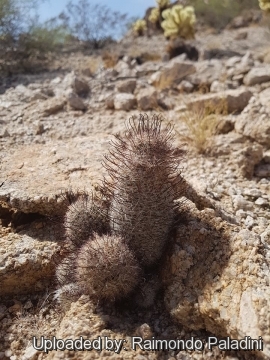
Mammillaria grahamii in habitat (Arizona) (Mammillaria grahamii) Photo by: Raimondo Paladini
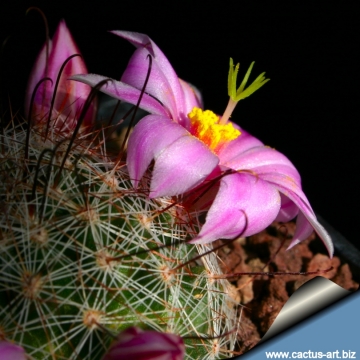
Mammillaria microcarpa subs. grahamii (Mammillaria grahamii) Photo by: Cactus Art
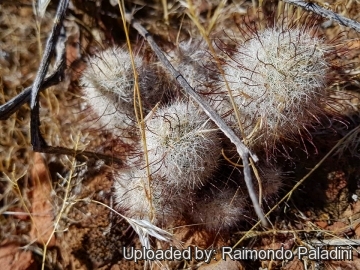
Mammillaria grahamii, Roosvelt Lake, Arizona, Usa (Mammillaria grahamii) Photo by: Raimondo Paladini
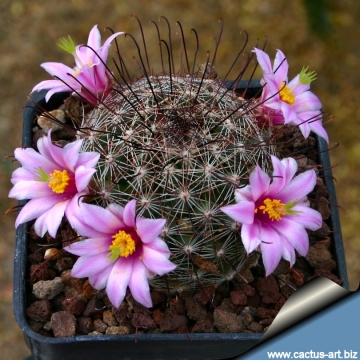
Mammillaria microcarpa subs. grahamii (Mammillaria grahamii) Photo by: Cactus Art
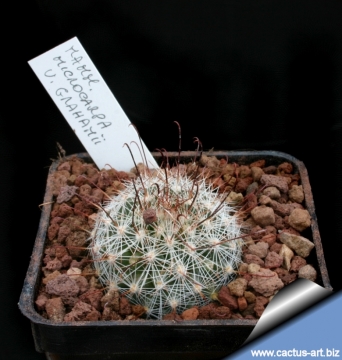
Mammillaria microcarpa subs. grahamii (Mammillaria grahamii) Photo by: Cactus Art
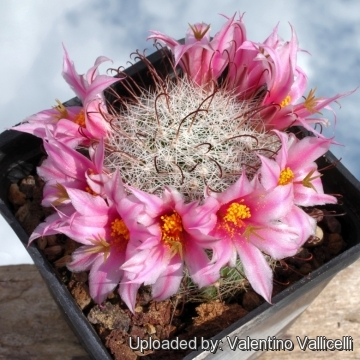
Mammillaria microcarpa subs. grahamii (Mammillaria grahamii) Photo by: Valentino Vallicelli
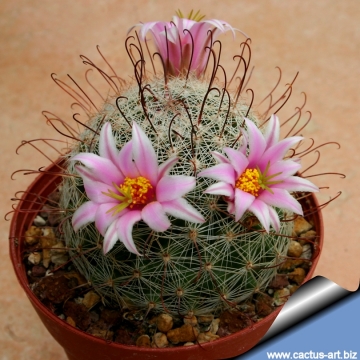
Mammillaria microcarpa subs. grahamii (Mammillaria grahamii) Photo by: Cactus Art
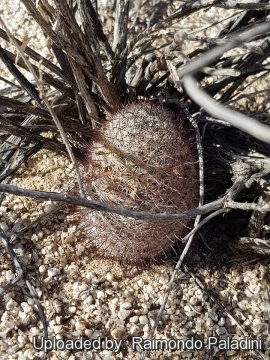
Mammillaria grahamii in habitat (Arizona) (Mammillaria grahamii) Photo by: Raimondo Paladini
Cultivation and Propagation: This plant is not famous for being easy to cultivate, but in good conditions with excellent ventilation, it grows without difficulty. It is especially sensitive to over-watering. So careful watering and an open mineral potting soil are a must. Avoid the use of peat or other humus sources in the potting mixture. Don't add limestone to the potting mix, which must be moderately acidic. It can be sensitive to frost (but some population are resistant to -10° C). It requires maximum sun exposure to reach its full potential, and to achieve success in flowering. A winter rest that allows the plant to shrivel (perhaps losing up to 25% of its summer height) will encourage flowering and long time survival. Be careful to encourage slow growth.
Propagation: Seeds or offsets.
Uses:
- Apache, Pima, Chiricahua & Mescaleros: They used the fresh and dried fruit primarily for children, as a snack food..
- Pima: They used the boiled plant placed warm in the ear for earaches and suppurating ears.
- Seri And Pima also used it in special ceremonies by shamans. Fruits are also said to produce hallucinatory effects.
| Your Actions | |
|---|---|
| Back to Mammillaria index | |
| Back to Cactaceae index | |
 |
Back to Cacti Encyclopedia index |
Privacy stantement - Terms and conditions - How to cite - About us - Feedback - Donate




